Leonardo participates in collaborative research and innovation initiatives and programmes at the regional, national, and supranational levels. Major European programmes such as the European Defence Fund (EDF), European Defence Agency (EDA), Horizon Europe, National Recovery and Resilience Plan (NRRP) and National Military Research Plan (NMRP) promote and fund cooperation among enterprises, research institutes and universities, supporting projects for the development of capacity and of critical technologies. Leonardo also participates in strategic initiatives in National and Regional Technology Clusters, such as chairing the National Aerospace Technology Cluster.
-
 Air Combat Capabilities
Air Combat CapabilitiesFITS4TOP - Future Integrated Training Solution for TOP gun
Programme: EDIDP (European Defence Industrial Development Programme) - 2019
Coordinator: Leonardo S.p.A.
Project start: December 2020 – currently active
Project duration: 42 months – planned extension to a total of 61 months
Goal
Definition of a new training concept that, on the basis of the needs of the air forces of the participating European nations, sets forth a common path based on the availability of an integrated training system, which will be developed and validated through the creation of a prototype. The training system will be studied from the point of view of the evolution of new technologies, such as embedded simulation and augmented reality.
-
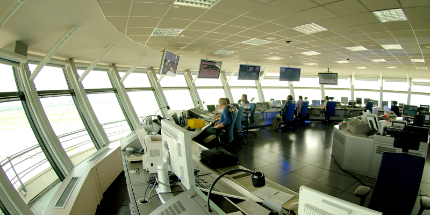 ATM (Air Traffic Management)
ATM (Air Traffic Management)FCDI – Future Connectivity and Digital Infrastructure
Programme: Horizon Europe – SESAR JU - 2022
Coordinator: Leonardo S.p.A.
Project start: June 2023
Project duration: 36 months
Goal
Specification and development of future communication technologies for support and management of operational services, with a view to achieving "smarter", more sustainable aviation. The project contributes to the cost efficiency of communication infrastructure, both through more extensive use of public networks, ensuring the scalability and sustainability of the communication infrastructure, and through the adoption of new technologies such as the new Datalink L-band Digital Aeronautical Communications System. FCDI will enable global interoperability of communication infrastructure, using alternative communication protocols and meeting specific technical, commercial, and regulatory requirements.
Official link to the project:https://www.sesarju.eu/projects/FCDI
For more information:SESAR3 programme: new funding for 12 Leonardo research projects
Future Connectivity and Digital Infrastructure (FCDI)
SESAR: Leonardo’s contribution to the future of Air Traffic Management
-
 Cyber Defence, Cyber Resilience, Situation Awareness
Cyber Defence, Cyber Resilience, Situation AwarenessECYSAP EYE– European CYber Situational Awareness Platform Enhanced cYberspace opErations
Programme: European Defence Fund (EDF) - 2023
Coordinator: Indra Sistemas S.A.
Project start: December 2024
Project duration: 36 months
Goal
Completion of a prototype of ECYSAP, the European situational awareness platform (previously referred to as the EDIDP project), enhancing its functionality in a multi-domain perspective and increasing its Technology Readiness Level (TRL). The ultimate goal is the creation of an advanced Cyber Situational Awareness solution for use at the European, national and NATO levels.
Key innovations include:
- Extension of Cyber Situational Awareness, including cyber-management of the electromagnetic spectrum (CEMA).
- Decision-making support for cyber ISTAR (Intelligence, Surveillance, Target Acquisition & Reconnaissance) operations through the results of full spectrum RCyP (Recognised Cyber Picture) analysis.
- Greater understanding of effects on the mission through a dedicated environment for the planning, execution, and termination phases of operations.
- Federation of different instances of the solution, compatibility, and interoperability with other European, national and NATO platforms.
Official link to the project:
For more information:ECYSAP – cyber situational awareness plaxtform for the defence of the European Union
FACT – Federated Advanced Cyber physical Test rangeProgramme: European Defence Fund - 2022
Coordinator: Kongsberg defence & aerospace
Project start: January 2024
Project duration: 36 months
Goal
Implementation of a common, federated European solution for conducting cyber-physical tests. Specifically, a laboratory for cyber resilience testing will be set up, employing a common architecture and shared tools capable of managing tests from different specialised environments against various types of computer vulnerabilities. The project aims to reduce the cyber-attack surface of today’s defence systems, which are often integrated with Internet of Things (IoT) devices, through new cybersecurity solutions.
Official link to the project:https://www.linkedin.com/company/fact-federated-advanced-cyber-physical-test-range/
- Extension of Cyber Situational Awareness, including cyber-management of the electromagnetic spectrum (CEMA).
-
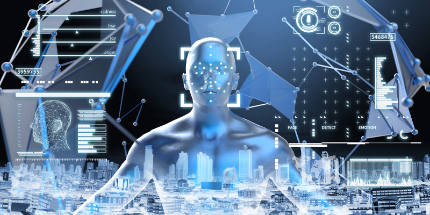 Digital Continuum - Artificial Intelligence
Digital Continuum - Artificial IntelligenceFaRADAI – Frugal and Robust AI for Defence Advanced Intelligence
Programme: European Defence Fund (EDF) - 2021
Coordinator: Centre for Research & Technology Hellas (CERTH)
Project start: December 2022
Project duration: 42 months
Goal
Development of autonomous and "frugal" learning technologies for artificial intelligence, which allow systems to adapt and learn from their environment at a sustainable cost, without the intervention of expert developers. The project focuses on the technological challenge of applying artificial intelligence to the world of Defence, taking advantage of relevant experiences emerging from civil research with the aim of improvement and broader application of overall performance.
Official link to the project:STORE – Shared daTabase for Optronics image Recognition and Evaluation
Programme: European Defence Fund (EDF) - 2022
Coordinator: Thales
Project start: December 2023
Project duration: 36 months
Goal
Development of image recognition systems based on artificial intelligence to accelerate decision-making processes in the Armed Forces through improvement of situational awareness. The project also envisages creation of a European database of categorised defence images, permitting detection and recognition of new threats so as to counter their evolution. STORE specifically addresses three case scenarios based on different types of threat: tanks and infantry vehicles, drones and drone swarms, and hypersonic threats. The project involves the creation of advanced infrastructure for the sharing and benchmarking of data and codes, development of models based on Artificial Intelligence and Machine Learning (AI/ML), and development of federated learning methods permitting the sharing of classified data.
Official link to the project:
-
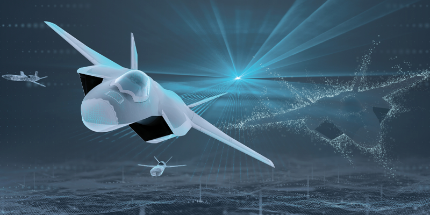 Digital Continuum - Digital Twins
Digital Continuum - Digital TwinsMATISSE – Model bAsed engineering of digital Twins for early verification and validation of Industrial Systems
Programme: Horizon Europe – Chips JU - 2023
Coordinator: Malardalens Universitet
Project start: September 2024
Project duration: 36 months
Goal
Design and testing of a model-based platform for efficient and continuous engineering of federated digital twins and sharing of a digital twin of the overall system resulting from shared aggregation mechanisms. Through this platform, the project proposes services based on digital twinning for verification, prediction, and monitoring, aimed at improving the design and federation capabilities of digital twins. In collaboration with the Gran Sasso Tech Foundation, of which Thales Alenia Space is a member, Leonardo will focus on a case scenario aimed at creating robotic arms for the maintenance of satellites in orbit.
Official link to the project:
-
 Digital Continuum - HPC
Digital Continuum - HPCMultiXscale – Centre of Excellence in exascale-oriented application co-design and delivery for multiscale simulations
Programme: Horizon Europe - EURO HPC - 2022
Coordinator: Centre for Molecular Modeling (CMM)
Project start: January 2023
Project duration: 24 months
Goal
Transition to exascale capability (1018 calculations per second) is applied to the field of multi-scale modelling, improving its performance, productivity, and portability. The project will implement three socially and industrially significant pilot case scenarios: helicopter design and certification, sustainable energy battery applications, and biomedical and ultrasonic applications. Leonardo is involved in the development of Lattice Boltzmann codes for the simulation of fluid-structure interaction, intended for use in digital twins of aircraft and helicopters.
Official link to the project:
-
 Digital Continuum - Quantum Technologies
Digital Continuum - Quantum TechnologiesQUID – QUantum Italy Deployment
Programme: Digital Europe Programme (DEP) - 2022
Coordinator: INRiM
Project start: January 2023
Project duration: 30 months
Goal
Nation-wide dissemination of experimental systems and networks in which to implement and test quantum communication technologies, capable of guaranteeing secure communications through Quantum Key Distribution, followed by integration with existing communication systems. Use of these systems and networks to develop case scenarios of use in national initiatives supporting the EURO Quantum Communication Initiative.
Official link to the project:https://quid-euroqci-italy.eu/it/
For more information:Leonardo is a key player in the QUID project that kicks off a quantum communication network in Italy
-
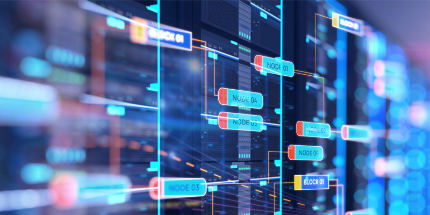 Digital Continuum - Supply Chain
Digital Continuum - Supply ChainDAMAS – Digital innovation hub for AutoMotive and AeroSpace
Programme: National Recovery and Resilience Plan (NRRP) - 2023
Coordinator: Leonardo S.p.A.
Project start: October 2024
Project duration: 15 months
Goal
DAMAS is Italy’s only European Digital Innovation Hub promoting the digital transformation and sustainability of the automotive and aerospace industries, with a focus on two strategic technologies: high-performance computing (HPC) and artificial intelligence (AI). Through personalised training courses, labs for experimentation, access to financing and a network of excellent contacts, DAMAS helps companies overcome the challenges of digitisation, accelerating the time-to-market of new products and services, reducing operating costs, and improving international competitiveness. A true digital ecosystem at the service of Italian industry.
Official link to the project:
-
 Land Defence
Land DefenceCUGS - Combat Unmanned Ground Systems
Programme: European Defence Agency (EDA) CAPTECH - 2022
Coordinator: Leonardo S.p.A.
Project start: February 2023
Project duration: 36 months
Goal
Selection and adaptation of three different categories of platforms, with definition, design, and development of a series of functional modules taking the form of complete demonstrators for highly autonomous unmanned ground combat systems. Platforms and functional modules will provide solutions for: Navigation; Command, Control and Communications (C3) and Cooperation (including safe C3 for the fire chain); effector management.
The project will be divided into three phases:
Definition of the requirements and standards-based system architecture of the full CUGS demonstrator.
Adaptation of platforms and development of functional combat modules.
Integration of all the functional modules and intelligent functions associated with the platforms to demonstrate combat capabilities in operational scenarios.
MARTE - Main ARmoured Tank of Europe
Programme: European Defence Fund (EDF) - 2023
Coordinator: MARTE ARGE GbR
Project start: January/February 2025
Project duration: 24 months
Goal
Study and design of a new Main Battle Tank (MBT) platform adequately responding to current and future threats and needs, integrating innovative and disruptive technologies. MARTE will further investigate the use of such technologies to upgrade current MBTs, where applicable. The project aims to offer a service with superior protection, detection, and firepower capabilities, while at the same time improving the cost-effectiveness and lifecycle efficiency of the platform compared to existing MBT solutions.
-
 Microelectronics and Processors
Microelectronics and ProcessorsAGAMI_EURIGAMI - EURopean Innovative GaN Advanced Microwave Integration
Programme: European Defence Fund (EDF) - 2021
Coordinator: United Monolithic Semiconductors GmbH
Project start: December 2022
Project duration: 48 months
Goal
Setting up a competitive strategic European supply chain for high-performance radiofrequency electronic components employing gallium nitride (GaN) technology, required in current and future military operations. The project covers the entire gallium nitride supply chain, from the supply of epitaxial layers to component packaging and integration into modern electronic defence systems. The project focuses in particular on improving the technology and resilience against electrical and environmental interference of GaN components and devices, applicable to radar and electronic warfare, in order to achieve better performance and a higher degree of device protection in complex environments such as military scenarios.
EPI SGA 2 – European Processor Initiative – Specific Grant Agreement 2
Programme: Horizon 2020 – Joint Technology Initiative (JTI) – Euro HPC - 2021
Coordinator: Atos
Project start: January 2022
Project duration: 24 months
Goal
Design and implementation of a new family of European processors for high-performance computing, developing the processors of the previous EDI SGA 1 project. Given that digital sovereignty is becoming a crucial requirement for the EU - as it transitions from the role of end user of ICT technologies to that of key producer of solutions and skills - the project will permit development of specifically European know-how in this area, guaranteeing Europe’s independence and autonomy from non-EU companies.
TRISTAN – Together for RISc-V Technology and ApplicatioNs
Programme: Horizon Europe – Key Digital Technologies (KDT) – Joint Undertaking (JU) - 2021-1-IA
Coordinator: NXP Semiconductors GmbH
Project start: December 2022
Project duration: 36 months
Goal
Further Europe-wide development of RISC-V architecture, an open standard of instruction sets based on the principle of the reduced instruction set computer (RISC), in order to create an open-source ecosystem for the design of innovative integrated circuits, with benefits for European competitiveness and productivity in the sector. The project involves creation of a software development platform and an operational demonstrator. Leonardo focuses on new processors applicable to the autonomy of robots and drones and on other possible scenarios, such as avionics systems and smart cities.
Official link to the project:
-
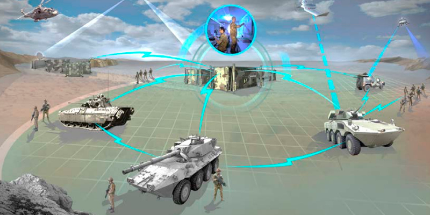 Multi-domain
Multi-domainCONNECTOR - CustOms exteNded iNteroperablE Common informaTiOn shaRing environment
Programme: Horizon Europe Civil Security (Cluster 3) - 2022
Coordinator: Satways
Project start: October 2023
Project duration: 24 months
Goal
Creation of a platform integrating different types of data to provide decision makers with situational awareness data in the context of maritime borders. CONNECTOR extends data exchange to include numerous stakeholders, such as customs and border guards. Leonardo acts as the point of contact for construction of Data Lake and Data Analytics facilities, coordinating the work of the consortium developing the solution. The CONNECTOR project is the follow-up to the PROMENADE project.
Official link to the project:
https://www.connector-project.eu/
EC2 – European Command and Control System
Programme: European Defence Fund (EDF) - 2022
Coordinator: Indra Sistemas S.A.
Project start: July 2024
Project duration: 24 months
Goal
Development of a future strategic command and control system for the European Union using features based on artificial intelligence, cloud computing, service-oriented architecture, data centre security/multi-level security and multi-domain solutions, with the aim of integrating C2 (Command and Control) capabilities with existing EU, NATO and national C2 systems and those under development.
EDOCC – European Defence Operational Collaborative Cloud
Programme: European Defence Fund (EDF) - 2021
Coordinator: Airbus Defence and Space GmbH
Project start: January 2023
Project duration: 36 months
Goal
Development of a European multi-domain virtual platform based on cloud technologies to increase the interoperability, efficiency, and resilience of military operations. Taking into account multiple operational requirements and constraints, and bringing together national and supranational solutions, the project aims to establish an open, autonomous environment for management of operational services on the battlefield, particularly as regards secure communications and cybersecurity.
J-CUAS - Joint European system for Countering Unmanned Aerial Systems
Programme: EDIDP (European Defence Industrial Development Programme) - 2020
Coordinator: Leonardo S.p.A.
Project start: November 2022
Project duration: 24 months - Completed
Goal
Specification, design, and validation, through a technological demonstrator, of an integrated anti-drone solution (C-UAS – Counter Uncrewed Aircraft System), interoperable with security and defence systems on the basis of the most advanced operational concepts. The project aims to develop a next-generation anti-drone system to deal with the growing threats posed by micro- and mini-drones, increasing situational awareness and improving response times and capabilities.
MILSCA – MILitary Space Cloud Architecture
Programme: National Military Research Plan (PNRM) - 2021
Coordinator: Leonardo S.p.A.
Project start: August 2024
Project duration: 24 months
Goal
Definition of a space-based cloud platform offering high-performance computing and data storage capacity to government and military users, preparatory to the creation of a constellation of satellites providing “anywhere/anytime” services. Setting up a Cloud Computing infrastructure in space is a response to the need for secure management of data and information. This infrastructure provides real-time tactical support in multi-domain/multi-nation operations, thereby permitting dematerialisation, flexibility, and ubiquitous access to advanced digital services in all theatres of operation, guaranteeing the superiority of the Armed Forces’ computing power. The project involves analysis of operational scenarios, study of user-level performance, and definition of cloud architecture in space, which will be tested through a prototype digital twin of the Space System, with development and testing of the LEO/MEO antenna demonstrator. The project lays the foundations for the integration of the aforementioned technologies in the space, terrestrial and cyber domains, setting up a High-Performance Computing system onboard spacecraft and enabling AI and Big Data algorithms to be run directly in Space – close to the sensors – or on Earth.
For more information:Leonardo: kick off for the project of the first Space Cloud System for defense
SEAFENCE – Multi-domain system for the protection of critical infrastructures (ports and sensitive sites)
Programme: National Military Research Plan (PNRM) - 2022
Coordinator: WSense S.r.l.
Project start: expected in 2025
Project duration: 36 months
Goal
Development of a technological demonstrator for an Early Warning protection system for ports and other sensitive sites, applicable in deep or shallow, friendly, or hostile waters. The system employs an integrated network of multilayer sensors (internal, intermediate, external) for advance identification of threats from uncrewed surface and underwater vehicles (UUV), midget and regular submarines, Deep Diving Vehicles (DDV) and divers. Sensors and collector nodes locally process the signals acquired, transmitting them via an underwater wireless network to a surface node and then to a C2 (Command and Control) platform capable of integrating data from other surface/air/satellite platforms and coordinating the reaction. The sensors are easily deployable, scalable over large areas, maintainable and rechargeable by UUV. Nodes are fixed and mobile (underwater robotic systems patrolling the area) to ensure integrated monitoring at different distances from the targets/areas of interest.
-
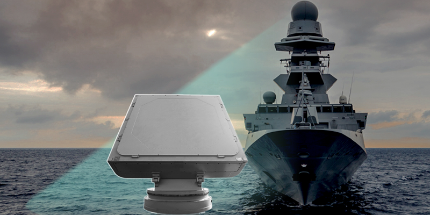 Sensors
SensorsARTURO – Advanced Radar Technology in eUROpe
Programme: European Defence Fund (EDF) - 2021
Coordinator: Leonardo S.p.A.
Project start: December 2022
Project duration: 36 months
Goal
Development of solutions meeting the future operational needs of Defence, based on extensive use of emerging radar technologies in Europe. The project consolidates the state of the art of technologies, emerging concepts, and trends in the field of radar, in-depth analysis of operational requirements, and the current evolution of threats and environments in various countries.
TIRESYAS – Technology Innovation for Radar European SYstem ApplicationS
Programme: European Defence Fund (EDF) - 2022
Coordinator: Leonardo S.p.A.
Project start: December 2023
Project duration: 36 months
Goal
Development of new radar technologies by increasing sensor resilience. In continuity with the cooperation that began with the EDF-2021 ARTURO project, the TIRESYAS project will develop new approaches to radar surveillance and target tracking, using innovative algorithms capable of combining different radar architectures and evolving towards a new generation of fully digital multi-role, multi-domain, and multi-platform radar systems.
-
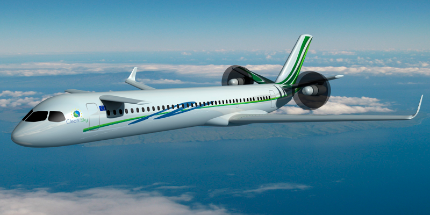 Sustainability
SustainabilityEECONE – European ECOsystem for greeN Electronics
Programme: Horizon Europe - Key Digital Technologies (KDT) – Joint Undertaking (JU) - 2022
Coordinator: Infineon
Project start: January 2023
Project duration: 48 months
Goal
Ensure the eco-sustainability of electronic components and systems technologies, so that they can easily be reused, disposed of, and integrated into various future-generation avionics structures, on the basis of the principles of the circular economy. The project also aims to develop a European value chain centring around this technology, reducing its environmental impact in line with the goals of the European Green Deal. Leonardo's activity focuses specifically on the creation of electronic sensors, designed to be embedded in aeronautical structures so as to monitor their state of wear.HERA – Hybrid-Electric Regional Aircraft
Programme: Horizon Europe – Clean Aviation - 2022
Coordinator: Leonardo S.p.A.
Project start: January 2023
Project duration: 48 months
Goal
Coming up with a regional aircraft concept featuring hybrid electric propulsion and performance, integrating state-of-the-art technologies to ensure regular operability. HERA will also define the key features of a real demonstrator and the corresponding flight tests, planned for the second part of Clean Aviation (the new name of the Clean Sky programme), in order to prepare for implementation on a real product destined to begin service in the middle of the next decade.
Official link to the project:
For more information:Leonardo leads the way in the future of green flight. The Clean Sky programme becomes Clean Aviation
-
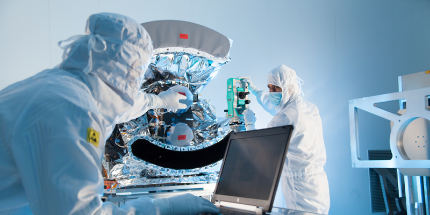 Space
SpaceEMISSARY - European Military Integrated Space Situational Awareness and Recognition capabilitY
Programme: European Defence Fund (EDF) - 2023
Coordinator: Leonardo S.p.A.
Project start: December 2024
Project duration: 48 months
Goal
EMISSARY will improve the acquisition of Space Domain Awareness information by supporting the development of an advanced sensor network and military Space Situational Awareness command and control software for processing and disseminating data, thereby ensuring national and European sovereignty. The aim of the project is to reach the prototyping, demonstration, and qualification phase for a broad set of technologies developed in previous EDIDP projects such as INTEGRAL and SAURON.
ODINS’S EYE 2 – multinatiOnal Development INitiative for a Space-based missile EarlY-warning architecture
Programme: European Defence Fund (EDF) - 2022
Coordinator: OHB System AG
Project start: December 2023
Project duration: 36 months
Goal
Development of the European Space-Based Missile Early Warning (SBMEW) architecture launched under the European Defence Industrial Development Programme (EDIDP) in 2020 and continued by the same coordinator under the EDF (European Defence Fund) in 2022. The Member States' objective is to develop a common alert capability, in order to respond to current and future threats to the security of the European Union. The target system includes early warning, technical intelligence, missile defence against ballistic, hypersonic, and anti-satellite (ASAT) threats, and proliferation control.
SPIDER - Space-based Persistent ISR for Defence and Europe Reinforcement
Programme: European Defence Fund (EDF) - 2022
Coordinator: Airbus Defence and Space SAS
Project start: December 2023
Project duration: 33 months
Goal
Feasibility study for the development of affordable multi-mission satellite constellations for space-based intelligence/surveillance/reconnaissance (ISR) in defence "case studies" compatible with national and EU initiatives. The goal of this project is to ensure high responsiveness, including autonomous reprogramming, short revisit periods, and short latency of the end-to-end system. The result of the project will be preliminary design of the system, including analysis of its performance and cost.
SURPRISE – SUper-Resolved comPRessive InStrument in the visible and medium infrared for Earth observation applications
Programme: H2020 Space Call (Cluster 4) - 2019
Coordinator: CNR
Project start: January 2020
Project duration: 36 months - Completed
Goal
Development of an electro-optical satellite component for Earth observation based on the compressive sensing technique, which limits the number of samples needed to reconstruct a pattern using an innovative spatial light modulator. The aim is to improve capabilities with regard to spatial resolution, on-board data processing and encryption functions, currently conditioned by revisit times and spatial resolution. By introducing the first payload whose design provides for an average spatial resolution and practically non-stop revisits from hour to hour, SURPRISE could revolutionise Earth observation and integrate existing operational services. Leonardo handled aspects involving evaluation of the project's results, with a view to the upcoming ESA/ASI Earth observation space missions.
-
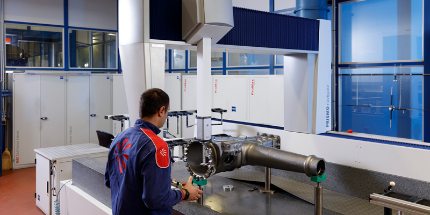 Technologies for Rotary Wing
Technologies for Rotary WingENGRT - Eu Next Generation Rotorcraft Technologies
Programme: European Defence Fund (EDF) - 2021
Coordinator: Airbus Helicopter
Project start: January 2023
Project duration: 42 months
Goal
Focusing on next-generation military rotary-wing aircraft, the project involves research in the Future Operating Environment (FOE) and Future Operating Concepts (FOC) of VTOL (Vertical Take-Off and Landing) systems. Through analysis of the trade-off between conventional helicopters and next-generation platform configurations (pusher, tiltrotor), ENGRT identifies the best solution(s) for meeting the future operational requirements of the European armed forces. In achieving this result, the project will also describe the technological gaps and the corresponding technological roadmaps to be followed.

